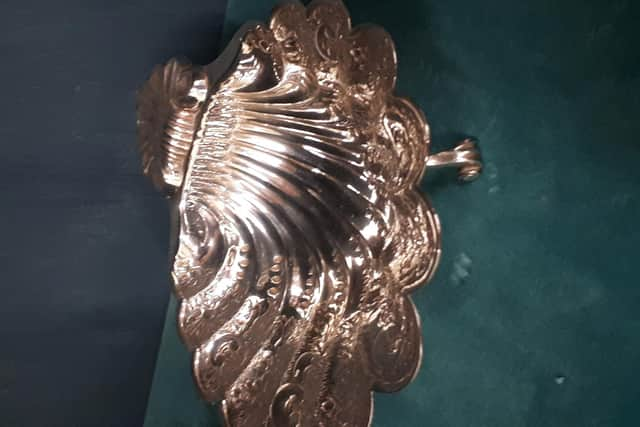Silver tableware always popular with collectors at this time of year
and live on Freeview channel 276
We’ve had a noticeable number of people coming into the centre looking for vintage tableware to make the festive dinner table special. After being unable to celebrate with family and friends last year, there’s an understandable desire to make this one a Christmas to remember.
When I suggest silver tableware, people often assume it will be prohibitively expensive (“we’re not posh!”), however we’re not talking a table groaning with goblets and salvers.
Advertisement
Hide AdAdvertisement
Hide AdSumptuous, eye-catching and bearing intriguing marks of previous use, a statement piece of antique silver will always add the wow factor. This beautiful antique bon bon dish, currently in the centre priced £158, would make striking centrepiece for sweets or nibbles. Or you could toast in the New Year with this tankard, priced £20.


For millennia confined to precious jewellery and currency, the discovery of the New World in the 16th century introduced many exiting new foodstuffs and inspired new forms of silverware to serve them, such as the coffee pot.
The fashion for fine dining and elaborate silver tableware increased during the 17th and 18th centuries. The abundance of silver- plates of varying sizes, cutlery, sauceboats, salvers, centrepieces, and candelabra- was a deliberate and magnificent display of status and wealth, intended to impress dinner party guests.
Such pieces can fetch thousands, but know your silver mixes, and you could pick up a Victorian or vintage twentieth century piece for much less.
Advertisement
Hide AdAdvertisement
Hide AdSterling pieces, the purest and most expensive, are required to be at least 92.5% silver and are easy to recognize by their marking of 925, or a lion or the word ‘sterling’ stamped into the piece.
Thanks to electroplating, developed in the 19th century, silver plate has all the beauty of sterling, but at a much more attractive price. The base is usually nickel, then plated with a thin layer of pure silver.
Intended to endure service in a hotel or restaurant, ‘hotel silver’ is made by layering a thick coat of silver over copper or brass, usually resulting in a slightly mat appearance. Silver is not magnetic, so if you can’t see or read the mark, use a magnet; silver plate and hotel silver will be attracted.
Being anti-bacterial and hygienic, silver is therefore perfect for use in dining. However, don’t delay, you’ve only got two weeks to get it polished up for your festive banquet!